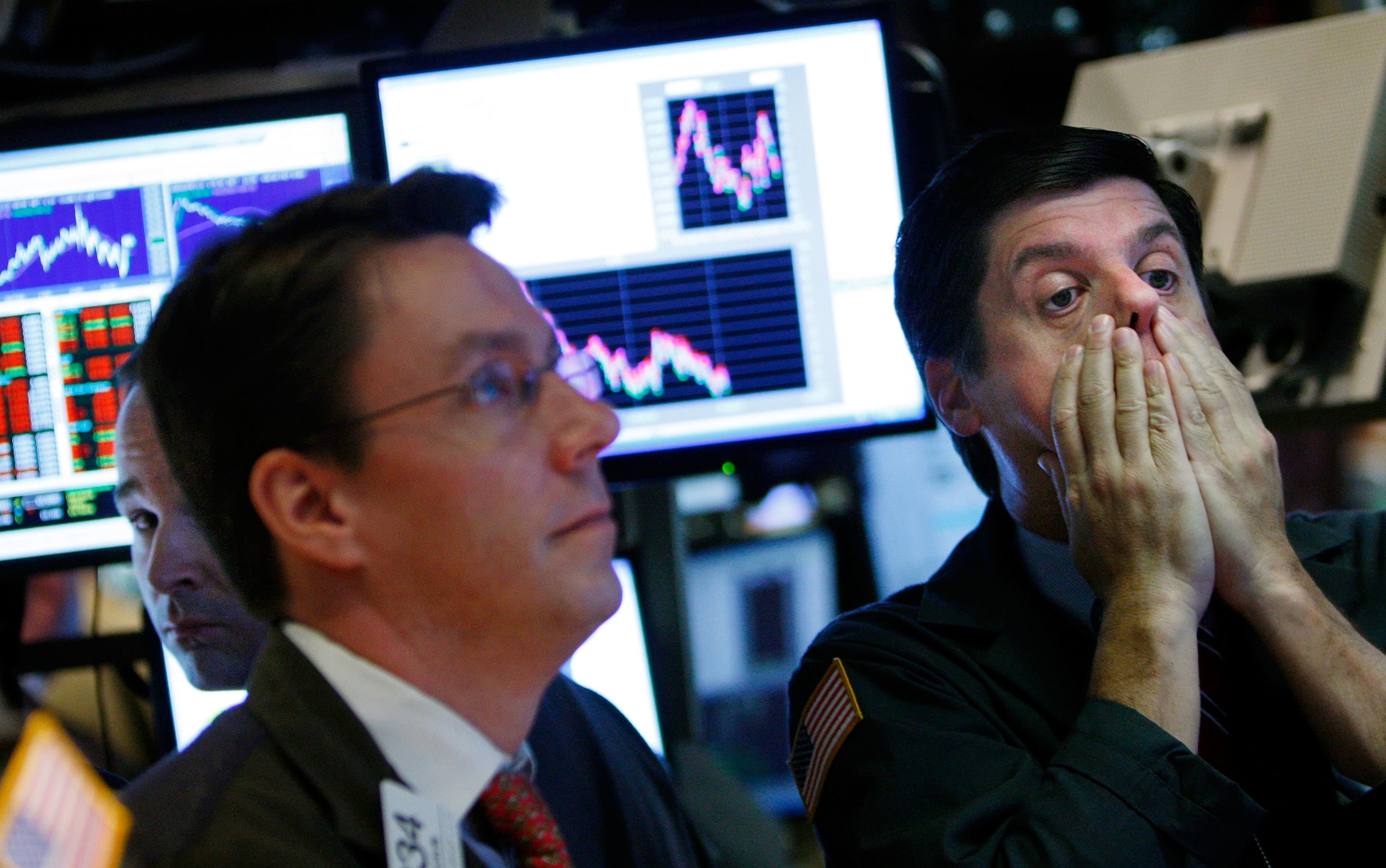Mario Tama | Getty Images News
In these difficult, confusing and, at times, scary days, it’s easy to get turned around in the market.
Though we’ve never seen anything like the health scare that’s happening real time right now, we have seen financial markets deal with massive unknowns and take hits in the last twenty years. In those times, as now, there are unique indicators providing windows into key components of the markets and market psyche.
Stocks likely matter most to you and your portfolio, but credit and debt are what matter to the macro market and investment banks. Those are markets that are not nearly as transparent or easy to follow as simply looking at the Dow or a single stock price. Bond markets mostly operate behind computer terminals and finding prices can be difficult for the non-professional. Right now, credit markets are becoming less liquid, which on a basic level means it’s more difficult to sell bonds and other securities. On CNBC, we’re speaking with the folks in these markets every day, so we can bring you real-time insight into what’s happening.
Having been a broadcast financial journalist through both the internet crash and the financial crisis, one learns that history tends to repeat itself. It’s not perfectly analogous, but believe it or not, there is often some rationality to even the most irrational moves. With that in mind, here are a few other things I’m watching every day outside of the broader equity markets.
High Yield Bond ETFs
These stock-like instruments provide a fairly easy window in how certain speculative (junk) bonds are trading. Both the iShares iBoxx High Yield Corporate Bond ETF (HYG) and the SPDR Bloomberg Barclays High Yield Bond ETF (JNK) exchange traded funds are good places to start. They track 1,008 and 910 high-yield bonds, respectively. How the market prices this kind of debt is both a good indication of forward economic conditions, as well as a bet on the risk that credit ratings will be cut. Big moves lower in these ETFs can be harbingers of both. From August to November of 2008, the HYG fell 32% and the JNK 38%. They both bottomed out five months before the stock market.
Closed-End Bond Funds
Similar to high-yield ETFs above, these funds reflect a more actively managed approach to owning a basket of bonds. They are also often more illiquid and expensive than owning ETFs, and can also use leverage. Those traits make them sometimes hated by financial advisors, but can also make them valuable guideposts to both credit markets and, because they are actively managed, a window into the thinking of fixed income leaders. Two funds I’ll be watching closely are the Pimco Dynamic Credit and Mortgage Income Fund (PCI) and the DoubleLine Income Solutions Fund (DSL). The DoubleLine fund is run by superstar Jeff Gundlach, and is heavily weighted toward emerging markets and high-yield debt. The Pimco fund is a window into housing, with about half of its portfolio exposed to mortgage bonds. Neither fund existed during the financial crisis, so there’s not much historical reference there, but each should be on your radar.
Separately, I also closely watch the Invesco Senior Loan ETF (BLKN) as an indicator of how the market feels about specific debt, particularly the fairly illiquid loan market.
Oil Prices
Yes, there’s an oil price war going on right now, sparked by Russia and Saudi Arabia getting ready to flood the market with extra supply. I wrote about it here. But oil is about more than just supply. Demand is an equal, or even greater, determinant of prices. And demand is more difficult to control. It’s possible Russia and Saudi Arabia could come back to the table and make a deal to cut output. American producers are racing to scale back their future output by cutting costs and laying off work crews. But if the world isn’t driving, flying or shipping goods, demand will fall faster than any supply cut could keep up with. So watch oil prices. Crude, like junk bonds, bottomed out a few months before stocks in 2009.
Boeing
Admittedly, this is more subjective than the above. But I would argue that two of the most important single stocks in the world right now are Boeing (BA) and Deutsche Bank. Boeing because it not only is exposed to the hardest hit sector in the world now – travel – but also because it has huge pension obligations. Falling equity markets and lower interest rates are a double-hit to companies with defined benefit plans. Boeing now has a book value of negative $8 billion dollars, nearly $7 billion less than at the peak of 2009. Much of that decline is due Boeing’s big stock buybacks over the years (book value is common equity divided by number of shares) but it’s certainly a measure to watch on a stock which is still one of the most weighted stocks in the Dow.
Deutsche Bank
The biggest bank in Europe and one of the most important banks in the world, Deutsche Bank (DB) is the one stock to watch to help gauge global sentiment in the banking system. Deutsche Bank has been struggling for years and shrinking it’s footprint. During the financial crisis shares bottomed out at $16.40 in January, 2009. They are under $6 today.
Subscribe to CNBC PRO for exclusive insights and analysis, and live business day programming from around the world.
